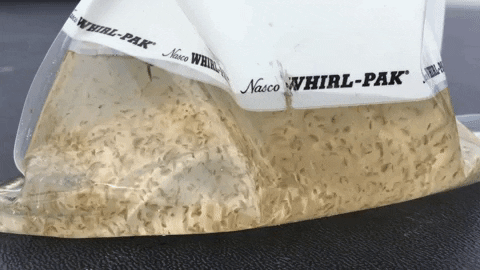Bug hunter and Senior Scientist for CalTrout, Jacob Katz was featured recently in Eating Well magazine for his work on the Nigiri Project, working with Central Valley rice farmers to flood their fields in winter in order to mimic the natural shallow flooding that historically created productive rearing habitats for young fish. When rivers were still connected to our state’s vast floodplains− now diminished by 95% −fish would feast on the bug buffet generated from the shallow flooded area.

All sorts of bugs grow in rice fields, but water fleas (cladocera) are like floating fillet for fish in rivers. (Credit: Ezra David Romero / Capital Public Radio)
From the article: “This conservation endeavor began as a research experiment (dubbed the Nigiri Project, for its sushi-like pairing of rice and salmon) in 2012, pioneered by Carson Jeffres, field and lab director at the University of California, Davis, and then doctoral student Jacob Katz. The study, says Katz, started, “in the corner of a flooded rice field. A 5-acre mud puddle about shin deep.” But the results were astounding: salmon in the flooded rice fields grew larger and faster than fish in the river because the decomposing rice stalks attracted a feast of critters for the baby fish to eat. This is crucial because bigger fish are more likely to return from the ocean to the river to spawn as adults.”
We’re excited to announce that the Nigiri Project has evolved into a new project, officially launched in 2017: Fish Food on Floodplain Farm Fields. Capitol Radio invited Jacob to their show this month to discuss the project. Give it a listen here.
Watch Jacob show us first-hand what he means by “bug buffet”:
Read “There’s Something Fishy Here”, Eating Well, January/February 2018:
[gview file=”https://caltrout.org/wp-content/uploads/2018/01/Nigiri.pdf”]





1 Comment
Jacob, nice to see the program expand. Can’t wait to see more about the new program, and maybe to begin to get fish return data from previous years.